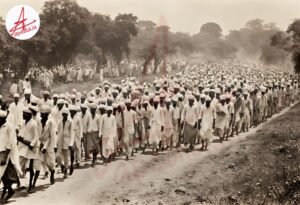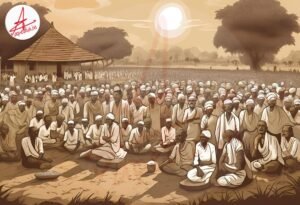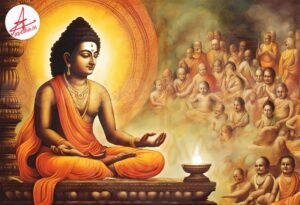August 15, 1947
India gained independence from British colonial rule.
Partition of British India into India and Pakistan.
India’s independence was the result of a long, determined struggle spanning over a century against British colonial rule. This movement, famously referred to as the Indian Independence Movement, witnessed an amalgamation of diverse strategies like non-violent protests, civil disobedience, and at times, armed resistance.
British Colonial Rule
The British East India Company started establishing its foothold in the Indian subcontinent as early as the 17th century. Over time, their economic influence transformed into political dominance, which ultimately led to the direct colonization of India. The official British Raj began in 1858, post the 1857 Rebellion, marking the beginning of direct Crown rule in India.
The 1857 Rebellion
Known as the First War of Indian Independence, the uprising was a reaction to years of exploitation and oppressive British policies. Although the rebellion was brutally suppressed, it ignited a collective consciousness among Indians about their subjugation and desire for self-rule.
Raja Ram Mohan Roy
Widely regarded as the “Father of Modern India,” Roy was a progressive social reformer who played a crucial role in advancing the causes of women’s rights, education, and the abolition of the regressive practice of Sati (widow immolation).
Indian National Congress (INC)
Founded in 1885, the INC initially functioned as a platform for moderate demands for more representation of Indians in government. Over time, it evolved into the principal force in the struggle for independence, especially under the leadership of figures like Gandhi, Nehru, and Patel.
Mohandas Karamchand Gandhi
Revered as Mahatma Gandhi, his philosophy of non-violence and Satyagraha (truth-force) became the soul of the Indian Independence Movement. His campaigns, such as the Salt March and Quit India Movement, mobilized millions of Indians in peaceful resistance against the British.
Jawaharlal Nehru
Nehru, the first Prime Minister of India, was a leading voice for independence, advocating for a secular, democratic India. His vision laid the groundwork for the modern Indian state.
Subhas Chandra Bose
A revolutionary leader, Bose formed the Indian National Army (INA) and sought the support of Axis powers during World War II to militarily oust the British. His slogan, “Give me blood, and I shall give you freedom!” inspired many.
Swadeshi Movement
Launched in 1905, the Swadeshi Movement aimed to reduce dependence on British goods and promote Indian-made products. It became one of the first major economic resistance movements.
Rowlatt Act
Enacted in 1919, this repressive legislation allowed the British government to imprison any Indian suspected of sedition without trial. The widespread anger over the act led to the Jallianwala Bagh Massacre, where British troops opened fire on unarmed protesters, killing hundreds.
Non-Cooperation Movement (1920-1922)
Launched by Gandhi, this movement called for Indians to withdraw from British institutions, schools, courts, and offices in peaceful defiance of colonial authority.
Salt March (1930)
One of Gandhi’s most symbolic acts of defiance was the Salt March, a 240-mile trek to the Arabian Sea, where he and his followers made salt to protest British salt laws. It became a pivotal moment in the movement.
Quit India Movement (1942)
The most direct challenge to British rule came with the Quit India Movement, launched by the INC, demanding an end to British rule. The British responded with arrests, but the movement sowed the seeds of the final push for freedom.
Mountbatten Plan
As communal tensions between Hindus and Muslims grew, the British proposed the Mountbatten Plan in June 1947, which led to the partition of British India into two independent nations: India and Pakistan.
Independence Day
On August 15, 1947, India formally gained independence. Simultaneously, Pakistan also came into existence on August 14, 1947. The two new nations embarked on their separate, albeit troubled, journeys.
Partition Violence
The partition was one of the most traumatic events in modern history, displacing millions and resulting in violence, with nearly one million estimated dead due to riots, massacres, and forced migrations.
Kashmir Dispute
One of the enduring legacies of partition was the unresolved dispute over Kashmir, a princely state claimed by both India and Pakistan. This conflict has led to multiple wars and continues to strain relations between the two nations.
Economic Challenges
At the time of independence, India faced significant economic hardships. Widespread poverty, illiteracy, and a lack of industrial infrastructure presented enormous challenges to the new government.
India’s independence was a watershed moment not only for the subcontinent but also for the global anti-colonial movement. India’s democratic and secular foundation, laid by the likes of Nehru and Gandhi, inspired other colonies to fight for self-determination. Today, India stands as the world’s largest democracy and one of the fastest-growing economies, embodying a rich tapestry of cultural diversity, religious tolerance, and peaceful coexistence.








